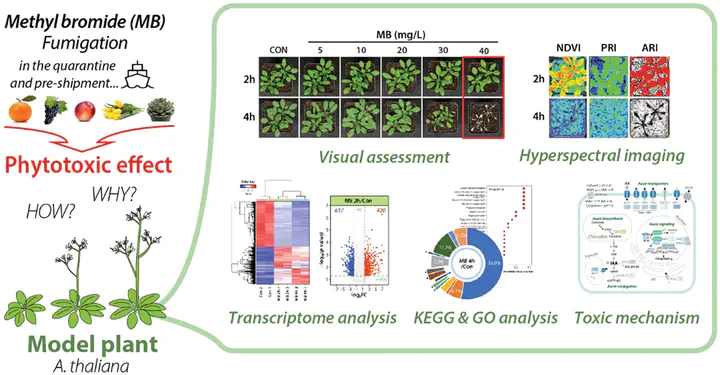Transcriptomic evaluation on methyl bromide-induced phytotoxicity in Arabidopsis thaliana and its mode of phytotoxic action via the occurrence of reactive oxygen species and uneven distribution of auxin hormones

Abstract
The increase in worldwide trade has caused the quality maintenance of commercialized agriproducts to be crucial in keeping its economic value. In recent years, methyl bromide (MB) has been used dominantly during quarantine and pre-shipment, despite it being an environmental hazard with global repercussions. Through this study, it was shown that Arabidopsis thaliana’s 2 h exposure to the MB treatment displayed no signs of phytotoxicity, whereas its 4 h exposure significantly interfered with growth. The transcriptomic analysis found the molecular modifications in A. thaliana after the MB fumigation with the up-regulation of genes specifically relative to the abiotic and oxidative stress, and the down-regulation of auxin transporter genes. Some important gene expressions were verified by RT-qPCR and their expression patterns were similar. Oxidative stresses via the reactive oxygen species (ROS) in relation to MB phytotoxicity were confirmed with the increased malondialdehyde in MB-4h-treated A. thaliana. Uneven distribution of auxins via lower expression of auxin transporter genes was also determined using UPLC-ESI-QqQ MS. Application of two ROS scavengers such as N-acetyl-cysteine and L-glutathione minimized MB phytotoxic effect in A. thaliana. Therefore, MB caused severe oxidative stress, and alternatives regarding the use of MB should be considered.
Supplementary notes can be added here, including code, math, and images.